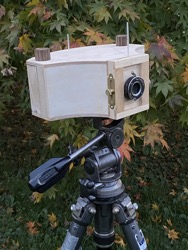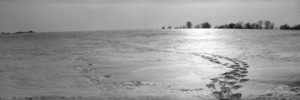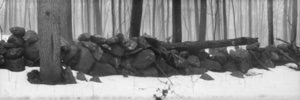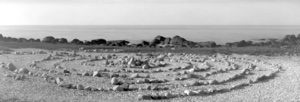Camera #3 - 6x17 Panoramic - 120 Film

|
One of the great appeals of pinhole cameras is the flexibility that comes with building your own. They can be as plain or fancy as you want, with nearly any angle of view, or image format.
My first two pinhole cameras use traditional 4x5 and 5x7 sheet film, and have been a lot of fun. They were both straightforward and relatively simple builds, and I wanted to up my game a bit this time around. This next project grew out of a years-long yearning for a 6x17 panoramic camera. 6x17 is a rather common format in the panoramic world, and gives 4 exposures on a roll of 120 film. There are a few reasonably priced 6x17 PH cameras available, so it would have been pretty easy to sit down at the computer, click a few links, and just wait for a bit. Those cameras tend to have rather wide angles of view though, typically around 140 or 150 degrees. I wanted a much narrower 60-degree field of view, and of course I like to build things. | ||
|---|---|---|---|
|
In the meantime, here are two more images for your enjoyment. | |

|

|
|---|---|
|
Copyright 2023, Thayer Syme |

